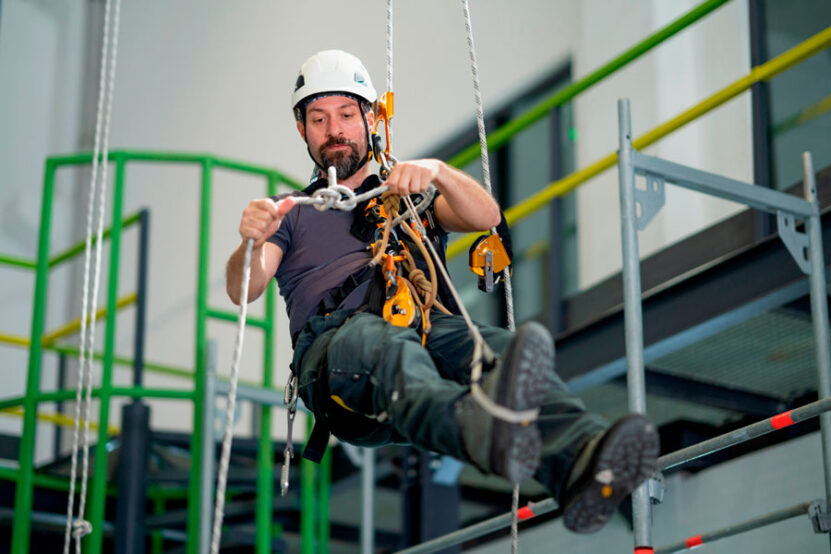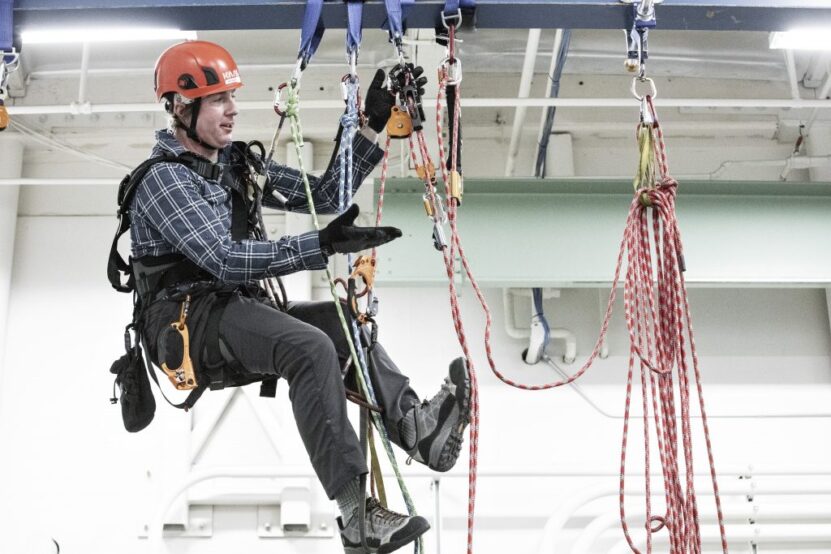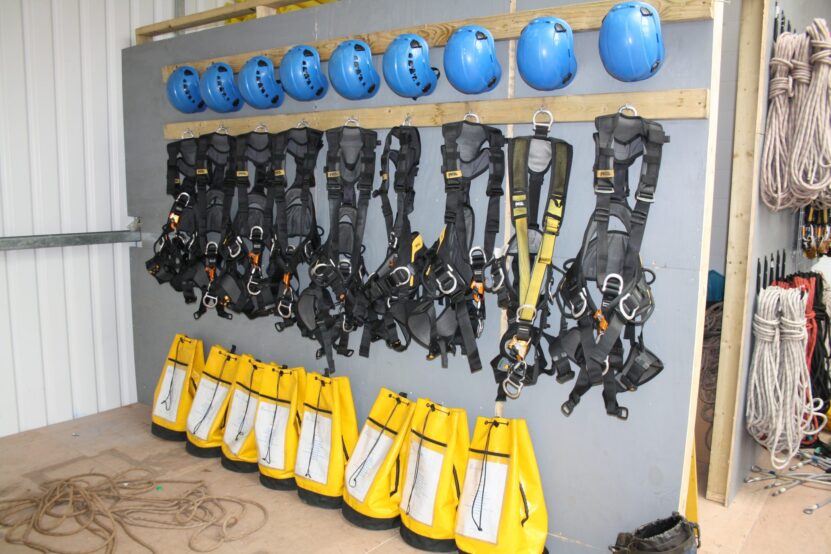In the realm of industry and construction, where reaching great heights and navigating challenging spaces is a daily occurrence, rope access has become a remarkable solution. This innovative technique combines the use of ropes, harnesses, and skilled technicians to access difficult-to-reach areas safely and efficiently. Beyond its practical applications, there’s a world of fascinating facts and interesting tidbits to discover about rope access. In this article, we explore some of the most intriguing aspects of this versatile method.
1. A Brief History of Rope Access

While rope access may seem like a modern innovation, it has its roots in centuries-old climbing and rigging techniques. It was initially developed in the 1980s as a formalized industry in response to the need for safer and more cost-effective methods for working at heights and in confined spaces. Since then, rope access has continued to evolve and expand into various industries, including construction, maintenance, and rescue operations.
2. The Art of Rope Access
Rope access is not just a technical skill; it’s often considered an art form. Skilled technicians, known as rope access professionals, must undergo rigorous training and certification processes. They develop a keen sense of spatial awareness, balance, and rope handling that allows them to move with precision and grace in challenging environments.
3. Versatility in Industries
Rope access is incredibly versatile, finding applications in a wide range of industries. From inspecting towering wind turbines to cleaning the windows of skyscrapers, conducting maintenance on offshore oil rigs, and even preserving historic monuments, rope access techniques can be adapted to suit various needs. This adaptability is one of the key reasons for its widespread adoption.
4. Minimal Environmental Impact

Compared to traditional access methods that require heavy machinery, rope access has a significantly smaller environmental footprint. It generates minimal noise pollution and dust, making it an environmentally responsible choice for projects in sensitive or urban areas. This minimal disruption to the surroundings is particularly valuable in today’s environmentally conscious world.
5. Safety at the Core
Safety is paramount in rope access operations. Professionals adhere to strict safety regulations and use redundant safety systems to ensure the security of every worker. The industry has an impressive safety record, with a strong emphasis on accident prevention and constant improvement.
6. Geographical Challenges
Rope access has found applications in some of the world’s most challenging terrains. Technicians have scaled cliffs, descended into deep crevices, and even navigated inside glaciers for exploration and scientific research. This adaptability to various landscapes is a testament to the effectiveness of rope access techniques.
7. International Rope Access Community

Rope access has a global community of professionals who exchange knowledge and best practices. Various organizations, such as the Industrial Rope Access Trade Association (IRATA) and the Society of Professional Rope Access Technicians (SPRAT), provide standards and guidelines for the industry. These associations also organize international events and conferences where experts come together to advance the field.
8. A Cost-Effective Solution
One of the most significant advantages of rope access is its cost-effectiveness. It eliminates the need for expensive equipment and machinery, reducing project costs. Additionally, its efficiency and minimal downtime result in savings for businesses and project owners.
9. Continuous Innovation
As technology advances, rope access techniques continue to evolve. New materials, equipment, and methodologies are constantly being developed to enhance the efficiency and safety of rope access operations. This commitment to innovation ensures that rope access remains at the forefront of modern industry.
In conclusion, rope access is more than just a practical solution for challenging work environments; it’s a fascinating world of skill, innovation, and global collaboration. Whether you’re standing at the base of a skyscraper, gazing at a wind turbine, or exploring natural wonders, you can appreciate the incredible feats achieved by rope access professionals. As technology and industry standards continue to evolve, we can expect even more exciting developments in this remarkable field, further solidifying its place in the world of work at heights and challenging spaces.
10. Essential Equipment

The equipment used in rope access is a marvel of engineering. These include specialized ropes, harnesses, ascenders, descenders, carabiners, and pulleys, each designed for specific tasks and safety requirements. The meticulous selection and maintenance of these tools are essential for ensuring the safety and effectiveness of rope access operations.
In summary, rope access is a fascinating and versatile discipline that combines technical skill, safety, and adventure. It has found applications in numerous industries and environments, and its future looks promising as technology and innovation continue to shape the field. Whether you’re intrigued by the thrill of working at heights or simply amazed by the precision and versatility of this technique, rope access is an industry that continues to capture our imagination and inspire us to reach new heights—both figuratively and literally.
More information about: RopeBoys
